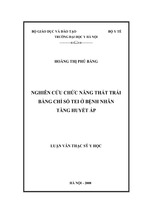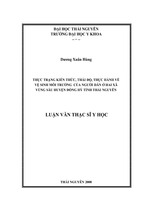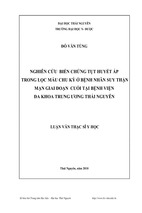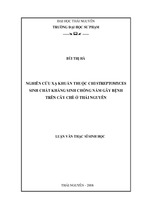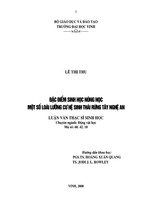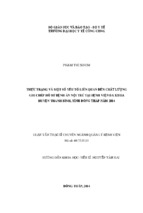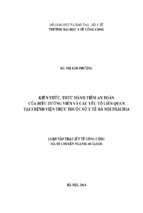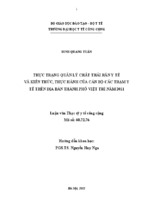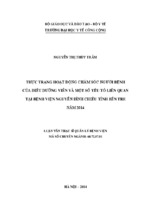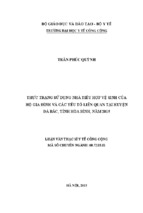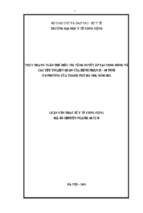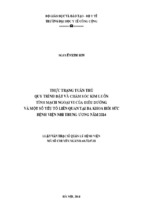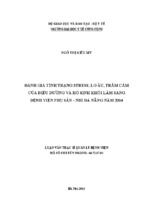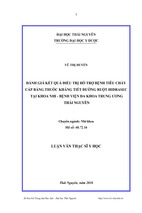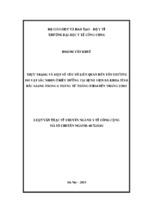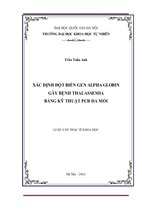Pb (II) Removal from Aqueous Solution by Biochar Produced
from Giant Reed
A thesis submitted in fulfilment of the requirements for the degree of Master of Applied Science
Eric York
Bachelor of Science (Chemistry)
Kwame Nkrumah University of Science and Technology
Ghana
School of Science
College of Science, Technology, Engineering and Maths
RMIT University
November 2020
Declaration
Declaration for candidates submitting a thesis
I certify that except where due acknowledgement has been made, the work is that of the
author alone; the work has not been submitted previously, in whole or in part, to qualify for
any other academic award; the content of the thesis is the result of work which has been
carried out since the official commencement date of the approved research program; any
editorial work, paid or unpaid, carried out by a third party is acknowledged; and ethics
procedures and guidelines have been followed.
I acknowledge the support I have received for my research through the provision of an
Australian Government Research Training Program Scholarship.
Eric York
Date: 18 November 2020
i
Dedication
I would like to dedicate this thesis to my late dad, who inspired my interest in science and
motivated me to undertake this research.
ii
Acknowledgements
If it had not been the Lord on my side, let Israel say (Psalm 124:1). My greatest thanks and
appreciation go to the almighty God for the love, protection and numerous blessings He has
bestowed on me. Father, my mouth will continually sing your praises. This work would not
have been possible without my supervisors A/Prof. Samantha Richardson and Dr James
Tardio, whose guidance and support were unwavering throughout the duration of my studies.
I would also like to thank all my colleagues and collaborators, who have contributed in some
way towards me completing my master’s thesis.
I also thank the Commonwealth of Australia for an Australian Postgraduate Award. I
acknowledge RMIT University for the Research Stipend Scholarship Award for this
Research. Lastly, I would like to thank my partner, Florence Appiah, whose unconditional
support and patience enabled me to complete this degree.
iii
Table of Contents
Declaration................................................................................................................................. i
Dedication .................................................................................................................................ii
Acknowledgements ................................................................................................................ iii
List of Figures .......................................................................................................................... vi
List of Tables ..........................................................................................................................vii
Abstract ..................................................................................................................................... 1
Chapter 1: Introduction .......................................................................................................... 3
1. Background ........................................................................................................................ 3
1.1 Trace Metals ................................................................................................................. 6
1.2 Sources of Trace Metals in Aqueous Solution ............................................................. 7
1.3 Lead .............................................................................................................................. 9
1.4 Biochar Production ..................................................................................................... 10
1.5 Feedstock for Biochar Production .............................................................................. 11
1.6 Biochar Production by Slow Pyrolysis ....................................................................... 15
1.7 Giant Reed (Arundo donax) ........................................................................................ 17
1.8 Arundo donax: Weed Potential ................................................................................... 21
1.9 Use of Arundo donax in Constructed Wetlands.......................................................... 23
1.10 Generation of Biochar from Giant Reed................................................................... 26
1.11 Use of Biochar for Removal of Trace Metals from Aqueous Phase ........................ 28
1.12 Mechanisms of Adsorption by Biochars .................................................................. 29
1.13 Adsorption Isotherm Models .................................................................................... 30
1.15 Adsorption Kinetics .................................................................................................. 34
1.16 Properties of Biochar ................................................................................................ 34
1.17 Factors Affecting Adsorption of Contaminants on Biochar ..................................... 35
1.18 Management of Spent Biochar ................................................................................. 37
1.19 Potential Biochar Improvement Techniques ............................................................ 37
1.20 Environmental Impact of Biochar use for Trace Metal Decontamination ............... 38
1.21 Sustainable Use of Biochar....................................................................................... 39
1.22 Potential Application of Biochar .............................................................................. 39
1.23 Conclusion ................................................................................................................ 40
Chapter 2: Experimental ....................................................................................................... 40
Materials and Methods ......................................................................................................... 41
iv
2.1 Chemicals ................................................................................................................... 41
2.2 Sample Preparation ..................................................................................................... 41
2.3 Production of Biochar by Slow Pyrolysis................................................................... 42
2.4 Biochar Properties ...................................................................................................... 42
2.6 Measurement of Adsorption of Pb 2+ with Microwave-Plasma Atomic Adsorption
Spectrometer (MP-AES)................................................................................................... 51
2.7 Calculation of Adsorption Efficiency of Trace Metal ................................................ 52
2.8 Data Modelling using the Langmuir, Freundlich and Temkin Equations .................. 53
2.9 Statistical Analysis ..................................................................................................... 54
Chapter 3: Characterisation of Biochars and Preliminary Adsorption Studies .............. 55
3.1 Introduction ................................................................................................................ 56
3.2 Experimental ............................................................................................................... 57
3.3 Results and Discussion ............................................................................................... 58
3.4 Conclusions ................................................................................................................ 70
Chapter 4: Adsorption of Pb(II) on Biochars – Studies on the Influence of some key
Adsorption Test Parameters ................................................................................................. 71
4.1 Introduction ................................................................................................................ 71
4.2 Experimental ............................................................................................................... 72
4.3 Results and Discussion ............................................................................................... 72
4.3.5 Rates of Reaction: .................................................................................................... 82
Pseudo First Order Model................................................................................................. 82
4.4 Conclusions ................................................................................................................ 84
Chapter 5: Conclusions and Recommendations ................................................................. 86
5.1 Conclusions ................................................................................................................ 86
5.2 Recommendations ...................................................................................................... 87
5.3 Summary of Study ...................................................................................................... 88
References ............................................................................................................................... 89
Appendix I: ........................................................................................................................... 102
v
List of Figures
Figure 1.1 Trace metal distribution............................................................................................ 7
Figure 1.2 Source of trace metals in the aqueous phase. ........................................................... 9
Figure 1.3 (a) Biomass feedstock for production of biochar; (b) biochar produced from the
feed stocks. ............................................................................................................................... 12
Figure 1.4 Slow pyrolysis set- up for biochar production ....................................................... 16
Figure 1.5 Illustrations of giant reed. ....................................................................................... 27
Figure 2.1 (A) Raw biomass of giant reed; (B) Dry biomass of giant reed. ............................ 41
Figure 2.2 Production of biochar by slow pyrolysis. ............................................................... 42
Figure 2.3 Perkin Elmer 2400 Carbon, Hydrogen, Nitrogen, Sulphur and Oxygen Analyser. 43
Figure 2.7 Perkin Elmer ATR Fourier Transformed Infra-Red Spectroscopy. ....................... 46
Figure 2.9 500MHz Agilent DD2 nuclear magnetic resonance spectrometer. ........................ 47
Figure 2.10 HANNA pH meter. ............................................................................................... 48
Figure 2.11 Centrifuge tube on orbital shaker, Chiltern model. .............................................. 50
Figure 2.12 Agilent 4200 microwave plasma - atomic emission spectrophotometer. ............. 52
Figure 3.1 Weight loss of GR 500, GR 300 and GR biomass using TGA800, Perkin Elmer. 59
Figure 3.2 Scanning electron micrograph of giant reed biochar produced at (A) 300 ℃ and
(B) 500 ℃ ................................................................................................................................ 60
Figure 3.3 (A) BET Isotherm Linear Plot for GR 300 ℃; (B) BET Isotherm Linear Plot for
GR 500 ℃. ............................................................................................................................... 61
Figure 3.4 Fourier transform infrared spectroscopy of giant reed biochar produced at 300 ℃
and 500 ℃. ............................................................................................................................... 63
Figure 3.5 Carbon-13 NMR of biochar produced at 300 ℃. ................................................... 64
Figure 3.6 Carbon-13 NMR of biochar produced at 500 ℃. ................................................... 65
Figure 3.7 XRD patterns of GR 500 and GR 300. Major diffraction lines for specific phases
are marked. ............................................................................................................................... 66
Figure 3.8 SEM-EDS analysis of GR 300 ℃. ......................................................................... 67
Figure 3.9 EDS spectra for selected regions of GR 300. ......................................................... 68
Figure 3.10 Pb2+ adsorption versus time for GR 300 and GR 500. ......................................... 69
Figure 4.1 Adsorption capacity versus initial Pb(II) concentration. ........................................ 73
Figure 4.2 Adsorption capacity versus solution pH. ................................................................ 75
Figure 4.4. Adsorption capacity versus biochar particle size. ................................................. 76
Figure 4.5 Ce/qe versus Ce for GR 300. .................................................................................. 77
Figure 4.6 Ce/qe versus Ce for GR 500. .................................................................................. 78
Figure 4.7 Log Qe versus Log Ce for GR 300. ........................................................................ 79
Figure 4.8 Log Qe versus Log Ce for GR 500. ........................................................................ 80
Figure 4.9 Schematic diagrams for cooperative adsorption..................................................... 81
vi
List of Tables
Table 1.1. The application of biochar produced from different feedstock and techniques in
aqueous solution....................................................................................................................... 13
Table 1.2 Advantages and disadvantages of A. donax with respect to its use as a plant in
constructed wetlands for wastewater treatment. ...................................................................... 24
Table 1.3 Environmental impact of the use of biochar and activated carbon. ......................... 38
Table 1.4 Economic impact of biochar and activated carbon for trace metals adsorption. ..... 38
Table 2.1 Experimental design for adsorption and characterization of biochar produced in this
study. ........................................................................................................................................ 48
Table 3.1 Elemental analysis of giant reed biochar ................................................................. 58
Table 3.2 Total surface area of biochar as attained by BET analysis. ..................................... 62
Table. 3.3 pH of biochars from giant reed in deionised water. ................................................ 67
Table 4.1 Comparative results for Pb(II) removal using biochars prepared from different
types of biomass. ...................................................................................................................... 84
vii
Abstract
The presence of lead, a trace element in the environment, has been a serious concern
especially with rapid urbanization, which has increased its concentration in the environment
by several hundred fold. The toxicity of this trace metal to aquatic life and humans has
necessitated the development of effective and economical methods for the treatment of water.
Biochar has garnered attention as a means to sequester carbon and manage waste in
the environment, particularly in soil and water. Invasive biomass such as the giant reed is rich
in lignin and the conversion of this biomass into char for environmental restoration is a prime
area for further research.
The main aim of this investigation was to develop a low-cost solution to remove trace
metals from the aqueous phase using biochar. This study investigated (i) the effect of giant
reed-based biochar produced at varying temperatures in the treatment of aqueous solutions
polluted with lead; and (ii) how the production of biochar at different temperatures affected
its adsorption capacity for lead from the aqueous phase.
The sorption of Pb (II) by biochar produced from giant reed at different temperature
profiles was studied. Two biochars, produced at a temperature of either 300 ℃ or 500 ℃,
were studied. The prepared biochars were characterized using the following: an X-Ray
Diffractometer; BET Surface Area and Pore Analyser; Scanning Electron Microscope;
Carbon, Hydrogen & Nitrogen Analyser;13C Nuclear Magnetic Resonance Spectrometer; and
Thermogravimetry Analyser.
The results showed that biochar produced at 300 ℃ was more effective than that
produced at 500 ℃ in the removal of lead from aqueous solution. Solution pH showed a
strong effect on the adsorption ability of giant reed biochar produced at 300 ℃ (GR 300 ℃)
to adsorb Pb (II) ions. The maximum adsorption capacity (19.2 mg/g) was found to occur
under the following conditions: Temp. 25 ℃, Pb (II) conc. 40mg/L, stirring rate 60 rpm,
biochar dosage 0.1g / 100 mL, 24 h. The equilibrium data were fitted to Freundlich and
Langmuir models. The Freundlich Isotherm gave the best fit for GR 300 ℃ with a value of
0.88. FTIR analysis and batch experiments results suggested that Pb (II) adsorption
mechanisms were dominated by complexation with active surface groups, precipitation and
cationic exchange. Experimental model results suggested that giant reed- derived biochar has
a good adsorption capacity for Pb (II) in aqueous solution compared to other plant biochars
reported in the literature.
1
The application of biochar in remediation of ground waste water is still warranted and
future research should consider that the outcome of remediation of ground waste water could
be achieved with biochar. Under a holistic approach to assessing remediation options, the
environmental outcome of the application of giant reed biochar will help equip researchers
and industry alike in their endeavour to reduce the burden posed by contaminated
groundwater into the future.
2
Chapter 1: Introduction
1. Background
Pollution is regarded by many in modern, western industrialized societies as a series
of current environmental issues. Of the many types of chemicals / compounds that are known,
pollutants include toxic heavy metals such as cadmium, lead, mercury and arsenic, which are
of significant concern. This is made evident by the fact that these toxic heavy metals all
appear on the World Health Organisations list of the top ten chemicals of major public
concern (WHO 2011). As a long-standing concern, pollution does not receive the same
political or media attention as climate change, biodiversity or manifestations of genetic
research but pollution investigation into anthropogenic (human) impacts on local, regional
and global scales has the power to alter lifestyle and economic production (Demirbas 2004).
In most third world countries, untreated agricultural, residential and industrial
pollutants are discharged into open streams and rivers leading to gross pollution of the natural
aqueous phase (Ahmad, Rajapaksha et al. 2014, Baltrėnas and Baltrėnaitė 2020). Wastewater
effluent is normally composed of multiple harmful compounds that pose a huge risk to human
health and to the aquatic habitat. Therefore, a low-cost solution to remediate wastewater is an
indispensable need in these countries. Adsorption using low cost material which is locally
available should be an effective and economical means to remove various contaminants from
the aqueous phase (Baltrėnas and Baltrėnaitė 2020).
Trace metals such as lead have become a worldwide issue due to resulting toxicity to
aquatic organisms and when ingested by humans(Chowdhury, Mazumder et al. 2016, Nagel,
Cuss et al. 2020). Although lead is often considered to be one of the most toxic metal
pollutants, it is important to recognize that it is a natural substance (Garrett 2000). In most
cases, lead becomes a pollutant when human activity releases it from rocks (i.e. from ores,
mainly through mining and smelting) (Garrett 2000, ATSDR 2007). Sources of lead moving
into the aquatic environment include mining, agriculture, fossil fuel combustion, battery
manufacturing and metal plating (Bradl 2005).Lead can cause disruption of vital organs in
aquatic organisms when its concentration increases beyond permissible limits (Chandurvelan,
Marsden et al. 2015). This has called for the treatment of lead-contaminated aqueous phase
through low-cost means (Li, Dong et al. 2017).
3
Biochar is a porous carbonaceous solid material that is produced in pyrolysis units
such as kiln reactors and furnaces by thermal decomposition of the precursors in limited air
or in an inert environment(Wang, Jiang et al. 2020). Another definition describes biochar as a
pyrogenic black carbon produced from biomass such as wood and seed when heated in an
oxygen-depleted environment and is rich in minerals, such as Mg, K and Ca (Lehman and
Joseph 2009, Ahmad, Rajapaksha et al. 2014, Schmidt, Kammann et al. 2014). Biochar
production is increasing gradually with soil mitigation, CO2 sequestration and control of
pollutants such as trace metals (Kajitani, Tay et al. 2013). The high carbon content, porosity,
cationic exchange capacity and large surface area of biochar makes it a suitable product for
various application such as climate mitigation, energy, heat and soil amendment (Ahmad,
Rajapaksha et al. 2014, Adekiya, Olayanju et al. 2020).
Over the past years, the interest in production of biochar from different biomass
samples for the purpose of treating aqueous phase contaminated with toxic trace metal has
gained popularity due to the low cost in getting the precursor for its production. However,
little has been done regarding converting invasive biomass, such as giant reed and others into
biochars for treating aqueous phase that is contaminated with toxic pollutants (Kumar, Singh
et al. 2020).
Conventional water treatment techniques such as ion-exchange and chemical
precipitation have been reported by many in the literature as being efficient for lead removal
from polluted aqueous phase but it is not cost-effective (Demirbas 2008).The limitations of
these methods include the production of toxic sludge and a high energy requirement (Barakat
2011). Adsorption by commercially produced activated carbon has been widely used for the
removal of lead in water treatment processes (Martin 1980, Cao, Ma et al. 2009, Liang, Guo
et al. 2009, Liu and Zhang 2009, Shin, Lee et al. 2020). However, the cost of raw materials
for its production makes it disadvantageous to use (Zhou, Chen et al. 2017). Krasucka et al.
(2021) reported a biochar production cost of 350–1200 USD/ton, which is lower than the
value for activated carbon (USD1100–1700 per ton). Some studies showed lower biochar
production prices as low 90 USD/ton in the Philippines. Higher values were reported for
those produced in the UK at 8850 USD /ton (Ahmed et. al. 2016). From an economic point of
view, the price of the biochar listed above depends on the effectiveness of the generated
material. It is also an important factor correlated with the biochar cost. Several aspects related
to biochar production, such as the pyrolysis production conditions, selected feedstock, and
transport have a considerable effect on the production costs. Homagain et al. (2016), through
life cycle assessment reported that most of the production cost is related to the pyrolysis
4
process. He also emphasized that the cost is related to the storage, processing of the biochar
and feedstock. Also, Keske et al.(2020) the evaluated economic analysis of biochar
production from Canadian black spruce forest. They reported that the pyrolysis stage is the
most costly, that is 36% of the cost, followed by feedstock collection (12%) and
transportation cost (9%). These resulted in a biochar cost of 762.20 USD/ton. That is the
reduction in the cost is taken to rely on the use of production technologies and the selection
of better low-cost materials. The use of wastes aligns with the economy principles and the
aims of “2030 Agenda for Sustainable Development” used by the United Nations (UN) for
favouring the reuse of materials, avoiding the generation of waste and reducing carbon
emissions,
Biochar has been found to be a promising material for the removal of inorganic
contaminants such as trace metals from wastewater (Tan, Liu et al. 2015, Ahmed 2016, Li,
Dong et al. 2017, Sizmur, Fresno et al. 2017), particularly by methods of adsorption (Cao,
Ma et al. 2009, Regmi, Moscoso et al. 2012, Shahrokhi-Shahraki, Benally et al. 2020), due to
its surface area, mineral component and functional groups (Cha, Park et al. 2016).
Previous research has shown biochar’s capacity in adsorbing trace metals such as
copper, lead and mercury (Ameloot, De Neve et al. 2013, Shen, Tian et al. 2017, Wang,
Huang et al. 2020). For instance, Carrier, Hardie et al. (2012) showed that biochar was
effective as a commercially produced activated carbon when sugar cane was pyrolyzed in a
vacuum pyrolysis unit. Jenks (2014) added biochar from hardwood to sand in a ratio of 30-70
% to create a filtration medium for the removal of trace metals such as Cu and Zn from a
point source and non-point pollution sources. The results from the experiment showed a 92%
reduction in Zn, 81% reduction in Cu, 94% reduced turbidity and 85% reduced suspended
solids. Biochar formed a small part of the project, but it showed the potential as an active
component that can improve the system as a whole. Cooks Jr (2014) showed that biochar
produced from pine and oak was able to remove 46% of organic salts and 95% of
hydrocarbons from fracking wastewater.
The use of biochar in wastewater contaminated with toxic trace metals involves the
exchange of existing ions in the biochar with trace metals in the aqueous phase. This shows
that there is a link between the content of biochar and its potential for removal of trace metals
from the aqueous phase (Chen, Cui et al. 2013). However, more research is needed to explore
other low-cost biomass precursors for the production of biochar for removal of trace metals
from the aqueous phase (Tan, Liu et al. 2015, Li, Dong et al. 2017).
5
Therefore, biochar is a promising novel material for metal removal from wastewater
(Lehman and Joseph 2009). However, its application to real ground waste water is warranted
due to the complexity of predicting the actual sorption capacity of an adsorbent for a target
trace metal among other pollutants (Li, Dong et al. 2017). Due to its large surface area and
high abundance of functional groups, biochar may have a high metal sorption capacity, where
the mechanism of sorption of trace metals may vary due to the intrinsic property of the
specific target metal in its mono or multi-metal aqueous phase (Ahmad, Rajapaksha et al.
2014, Park, Ok et al. 2016, Li, Dong et al. 2017).
In this study, we aimed to carry out an investigation into adsorption characteristics of
biochar produced from giant reed (Arundo donax) for adsorption of lead in aqueous phase.
Arundo donax is a potential bioenergy crop that can be used to produce biochar or activated
carbon(Sagehashi, Fujii et al. 2010, Sun, Yue et al. 2013, Hou, Huang et al. 2016).According
to Angelini, Ceccarini et al. (2009),giant reed has been found to be high above-ground
biomass, which yields (over a period of 10 years) with a better productive performance as
compared to Miscanthus. With such characteristics, it can be proposed as a biomass with a
significant environmentally compatible contribution to energy needs.
1.1 Trace Metals
Trace metals are a set of elements such as lead, chromium, cobalt and copper which are
required in low amounts in animals and plants but become toxic at high levels (Srivastava
and Majumder 2008, Mao, Liu et al. 2020). The term “Trace metals” has been preferred of
late as a better definition regarding the toxicity of these elements in place of the term “heavy
metals”(Fu and Wang 2011). Alternatively, trace metals can be defined as set of elements
which have high atomic number and specific gravity greater than 5 kg m-3 (Srivastava and
Majumder 2008). Unlike organic compounds, trace metals cannot be broken down to less
harmful products (Fu and Wang 2011).
Effluents from industries and residual domestic waters are the main source of trace metal
pollution existing in water streams (Förstner and Wittmann 2012, Joseph, Jun et al. 2019).
Generally, industrial waste contains trace metals such as cadmium arsenic, copper, lead and
mercury (Dunbabin and Bowmer 1992).Trace metals go through different stages and
ultimately end up in waste (Mulligan, Yong et al. 2001). However, the distribution of the
trace metals may vary when they are present at different concentration levels in the aqueous
phase (Hart 1982). Trace metal removal efficiency can vary depending on the solubility of
the metal in the aqueous phase (Bailey, Olin et al. 1999). Numerous studies have been
6
conducted on the analyses of the impact of trace metal contamination of water bodies
(Galloway, Thornton et al. 1982, Dunbabin and Bowmer 1992, Förstner and Wittmann 2012).
In mammals, trace metal toxicity can result in renal impairment, skin blisters, anaemia,
tissue edema and liver dysfunction (Nriagu 1990, Goher, Ali et al. 2019). Therefore, it is vital
to reduce the level of trace metals to levels that are safe for water sustainability and for the
survival of living species in them. This has created a global concern for the water community
worldwide to find an efficient way of removing trace metals to the limits acceptable for
preventing toxicity.
Figure 1.1 Trace metal distribution
(retrieved from Amiard Alloway (2012).
1.2 Sources of Trace Metals in Aqueous Solution
Trace metals are naturally found in the environment. However, due to anthropogenic
activities, their concentrations have increased in many aquatic environments (Alloway 2012).
Some of the major processes that contribute to trace metal accumulation in the aquatic
environment are run-off from metal contaminated waste, soil erosion and the application of
fertilizer and agrochemicals (Nriagu 1990, Mishra, Bharagava et al. 2019). All these sources
leach trace metals that are eventually washed off into nearby aqueous environments.
Anthropogenic activities such as electroplating and battery manufacturing have contributed to
the increase of trace metal concentrations in the environment (Dehdashti, Amin et al. 2020).
Poor disposal of domestic wastes and mining activities have also contributed to
contamination of aqueous phases polluted with toxic trace metals and Australia is no
exception (ABC 2014). According to the ABC (2014), the nearby environment in Costerfield,
7
Australia, where antimony is mined, has been polluted with trace amounts of antimony
beyond permissible limits as per the national Australian drinking water quality guidelines
(NHMRC 2015).
Effluents from nuclear generating facilities in some developing countries have been
reported to be one of the major sources of trace metal discharge into the environment
(Pacyna, Scholtz et al. 1995, Diarra and Prasad 2020). The large amount of wastewater
generated from operations in industries are usually not free from trace metal contamination
and are consequently discharged into groundwater and surface water (Chowdhury, Mazumder
et al. 2016).
Trace metals such as Se, Cu and Zn are essential elements for proper physiological
functioning of the body but may become toxic at low or too high concentrations when found
in food or water (Alloway 2012). Other trace metals have no known physiological roles. This
means that regulation of trace metals in the environment, especially in the aqueous phase, is a
great concern to the survival of living entities in the eco-system.
According to Duruibe, Ogwuegbu et al. (2007), human exposure to trace metals
occurs from direct exposure to polluted food and water. Some trace metals such as Pb (II), As
(III) and Sb (V) can be lethal even when ingested at low concentrations (around µg/ L) into
the human body (Jaishankar, Tseten et al. 2014). Studies have shown that diseases such as
those resulting in skeletal damage in humans can result from ingestion of toxic trace metals
(Järup 2003). Vital organs such as the kidney can easily mal-function when trace amounts of
these toxic chemicals accumulate, sourced from food such as vegetables that are consumed
on a daily basis (Patočka and Černý 2003). Trace metals are toxic to humans due to the
inability of the body to metabolise them and hence they readily bioaccumulate in the tissues
(Akpor and Muchie 2010).
8
Figure 1.2 Source of trace metals in the aqueous phase.
(Adopted from Frank Galadima and Garba (2012).
1.3 Lead
Lead (Pb) was one of the first known metals, which is very resistant to corrosion so it
does not biodegrade, instead, it can bioaccumulate in the human body where it serves no
beneficial purpose (Philip and Gerson 1994).
A significant amount of Pb (II) has been released into the environment. For example,
in 1998, Pb (II) was suggested to have been released more than any other heavy metal
(Nriagu 1998). In the environment, Pb (II) generally exists in a +2 oxidation state in the form
of galena (PbS), anglesite (PbSO4) or Cerussite (PbCO3). Pb (II) is relatively insoluble at
common environmental pH and readily adsorbs to the surface of particles (Morrison and
Murphy 2010).
Speciation of lead in an aquatic environment is mainly influenced by chlorates,
carbonates and organic occurring natural ligands (Zuluaga Rodríguez, Gallego Ríos et al.
2015). The proportion of lead in the inorganic complexes is mainly determined by the pH of
the water. This complex gradually increases in concentration with increasing total lead metal
loading in sediments, which pose a potential threat to aquatic biota and benthic organisms in
the aquatic system (Chakraborty, Babu et al. 2012).
Lead toxicity is as a result of accumulation that causes a decrease in hemoglobin
production and can adversely affect the reproductive organs and kidneys, and cause longterm damage to the central and peripheral nervous systems (Galadima and Garba 2012). Lead
exists as Pb (IV) and Pb (II) oxidation states. Anthropogenic activities such as battery
manufacturing haveincreasedits concentration in the environment by~1000-fold and the
highest occurrence was reported between 1950 and 2000 (Nriagu 1998).
9
Once absorbed, lead is transported in the bloodstream to other tissues and can
accumulate in high concentrations in the brain, bones, liver, lung, kidney, spleen, teeth, and
can pass through blood-brain and placental barriers (Casarett 1991).In humans, lead has a
probable average life of 35 days in blood, 40 days in soft tissues and 20 – 30 years in bones.
The average Pb biological life can be substantially higher in children than in adults (Patrick
2006). The chronic toxicity of lead in humans regularly produces apathy, convulsions, coma,
constipation, epigastric pain, low attention capacity, irritability, vomit and death (Zuluaga
Rodríguez, Gallego Ríos et al. 2015, Engwa, Ferdinand et al. 2019).
In children, lead accumulation can lead to encephalopathy with lethargy, anoxeria,
mental illness and vomiting. Persistent lead exposure can reduce cognitive function and can
cause disorders such as aggression, confusion, mental deficit and psychosis (ATSDR 2007).
1.4 Biochar Production
Biochar has been used for sequestration of CO2 in the atmosphere and soil
improvement (Lehmann and Joseph 2015)and management since the 1950s, as evidenced by
the discovery of “Tera preta” or “black earth” in the Amazon in Brazil by Dutch soil scientist
Wim Sombroek(Woods, Teixeira et al. 2009). Terra preta still covers 10% of the Amazon
Basin (Sombroek, Ruivo et al. 2003). Similar sites have been found in Ecuador, Peru, Benin
and Liberia in West Africa. Biochar has been tested for its ability to remove trace metals in
synthesised wastewater, with such studies highlighting its potential for removal of trace
metals from real aqueous environment (Chen, Cui et al. 2013). There are two ways to
produce biochar: (1) hydrothermal carbonization (HTC) and (2) pyrolysis. In HTC, the
biomass is charred in water (wet pyrolysis). This has an advantage of producing more
oxygenated functional groups, which can help in adsorption of pollutants. However, it is
energy demanding. During pyrolysis, the biomass sample is charred in a reactor with nitrogen
or CO2 as the gasifying environment, preferably from 500 ℃ to 800 ℃, although low
temperature derived biochar (biochar generated below 500 ℃ ) has been reported to bind
well with certain inorganic compound in the aqueous phase (Kwak, Islam et al. 2019).
The residence time for pyrolysis is normally between 30-60 minutes. However, some
studies have reported shorter times(Zhao, O'Connor et al. 2018). According to Ahmad,
Rajapaksha et al. (2014), the type of feedstock is a key factor when pyrolysis is used in the
production of biochar for specific environmental remediation purpose. In case of HTC, low
temperature and pressure are used to keep the water in the subcritical liquid phase (Huff,
Kumar et al. 2014, Qian, Kumar et al. 2015). In these processes, drying of the feedstock is
10
not required. Therefore, HTC can be considered a viable option for biochar (Qian, Kumar et
al. 2015).
Biochar has been found to be a good adsorbent for removal of pollutants, including
trace metals, such as Cu (II) and Pb (II) in water due to its large surface area, mineral
component and functional groups (Cha, Park et al. 2016).
Different techniques to improve the adsorption characteristics of biochar have been
investigated over the past decades. A review by Li, Dong et al. (2017) showed that biochar’s
ability to adsorb contaminants from the aqueous phase is based on many factors including the
type of contaminants. In previous studies conducted on removal of lead, it has been reported
that lead is adsorbed by biochar through surface complexation, precipitation and cationic
exchange (Yang, Wei et al. 2014, Kołodyńska, Wnętrzak et al. 2012).
1.5 Feedstock for Biochar Production
Feedstock is the conventional term used for biomass used in biochar production
(Verheijen, Jeffery et al. 2010, Schmidt, Kammann et al. 2014, Hassan, Liu et al. 2020). The
type of feedstock is an important factor in production of biochar through slow pyrolysis. High
moisture content feedstock for example needs to be thoroughly dried before slow pyrolysis.
(Tomczyk, Sokołowska et al. 2020).
Biochar has been produced from different biomass feedstocks such as crop residues,
woody biomass, perennial grasses, wood wastes, animal litters and solid waste (Askeland,
Clarke et al. 2019). The intrinsic characteristics of the feedstock such as ash content,
proportion of hemicellulose, cellulose, lignin, percentage composition of inorganic
substances, bulk density, calorific value, fixed carbon, moisture and volatile content are very
important determiners for the heating conversion process and of the final biochar produced
(Angın 2013). For instance, lignin and cellulose have been reported to resist thermal
degradation at temperatures of 280 ℃ to 500 ℃ and 240 ℃ to 350 ℃, respectively
(Demirbas 2004). This shows that the fractional proportions of each component of biomass
feedstock determine the structures that will remain during the pyrolysis process at a given
temperature. This was also confirmed by Winsley (2007) when pyrolysis of feedstock from
wood-based generated coarser biomass after addition of resistant biochar with a carbon
content of 80%. The unbending lignolytic nature of the raw material remained in the biochar
residue after pyrolysis.
Collison, Collison et al. (2009) reported that biomass feedstock can have different
compositions due to the environmental conditions they experience during growth. Such
11
factors include soil type, temperature and harvesting times. The nature and type of feedstock
used may also be dependent on the economic factors such as availability and cost of transport
to production systems and to market.
Figure 1.3 (a) Biomass feedstock for production of biochar; (b) biochar produced from
the feed stocks. Adopted from EBC (2012).
12
- Xem thêm -

